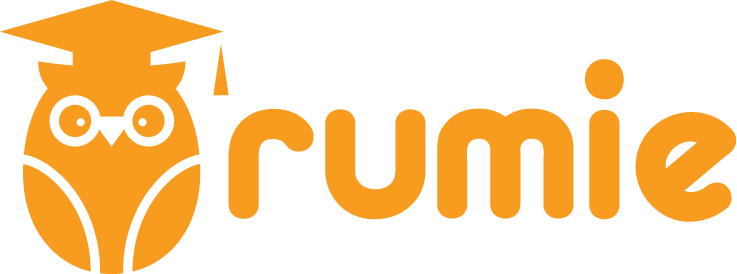You're midway through a job interview and it seems to be going well.
Then they ask: "Can you describe a time when you had to take initiative?”

You think to yourself: Does doing my job well count as initiative? Did my earlier example about teamwork already cover how I contribute?
While being reliable with routine tasks still matters, initiative means stepping up before anyone asks.
It’s about taking ownership — sometimes going beyond your job’s expectations — to lead a situation and deliver meaningful, effective, or time-saving results.
Why Interviewers Ask About Initiative
 Interviewers usually want to know if you can:
Interviewers usually want to know if you can:
Spot gaps or opportunities without prompting, demonstrating creativity and resourcefulness.
Act independently to drive meaningful outcomes, owning your work from start to finish.
Adapt quickly to new challenges, indicating flexibility, resilience, and a willingness to learn.
How to Prepare Your Answer
Select Your Initiative Story
Your initiative story can come from either your job or your personal life. What matters most are the skills you demonstrate.

Work-related Examples
Noticing recurring errors in client reports and creating a preventative checklist
Volunteering to lead a team meeting when your manager was unexpectedly absent

Personal Examples
Helping a friend set up a time-management app to meet tight deadlines
Taking a free online course to close a skills gap on your resume
As long as you align your skills to the role you want, personal examples can carry just as much weight as professional ones.

Connect Your Story to the Role
If you’re unsure about relevance:
Ask yourself: Does this story highlight skills or qualities that match what the team or company is looking for?
Think about whether it shows the kind of impact you could bring to the role, whether through problem-solving, collaboration, creativity, or another strength they value.
Structure Your Response with STAR
 Image created by Layla Hanna using Canva
Image created by Layla Hanna using Canva
Using the classic STAR frameworkto structure any initiative story can help to create a clear and concise answer.
Situation: What was the challenge or context?
Task: What were you aiming to achieve?
Action: What specific steps did you take?
Result: What was the outcome or lesson learned?
STAR Example
Lisa's Initiative Story
 Take Lisa, a self-taught user experience (UX) designer. She’s preparing for an interview for a UX design role. She notices in the job description that they’re looking for a "self-starter" who can use certain design tools, so she decides to build her initiative story around these qualities.
Take Lisa, a self-taught user experience (UX) designer. She’s preparing for an interview for a UX design role. She notices in the job description that they’re looking for a "self-starter" who can use certain design tools, so she decides to build her initiative story around these qualities.
 Situation
Situation
After a couple of years in retail, Lisa wanted to break into UX design but had no formal experience.
 Task
Task
She needed to build foundational design skills and a portfolio to showcase her abilities.
 Action
Action
Lisa enrolled in a free UX course and practiced by redesigning existing apps and websites.
 Result
Result
She built a professional-grade portfolio and developed proficiency in key UX tools, resulting in her first UX interview.
Putting STAR into Practice
 Lisa's Initiative Story
Lisa's Initiative Story
“I wanted to move into UX design, so I took a free online course and gained experience applying tools like Figma and Adobe XD. I built a portfolio by redesigning apps and websites, and joined UX communities for feedback and iteration.
That initiative helped me build a strong portfolio and apply UX tools in ways that genuinely improved user experience — giving me the confidence to contribute meaningfully to design teams."
Why It Works
In just a couple of sentences, Lisa covered Situation — Task — Action — Result.
She finishes by connecting her initiative story and skills back to the job opening, echoing the qualities listed in the job description: “self-starter”, “technical proficiency”.
Quiz: Recognizing Initiative in Interview Responses
Imagine you’re the interviewer. Which responses show someone taking initiative? Use what you learned from Lisa’s STAR example to guide your choices.
 A. Office Administrator
A. Office Administrator
“I noticed updates were getting lost in long email threads, so I designed a weekly bulletin. After running it by my manager, I sent it every Monday, saving each person time and boosting task clarity.”
 B. Marketing Intern
B. Marketing Intern
“Each Thursday, I audited our social-media calendar, filled any mid-week gaps with blog content, and shared the updated schedule with the team.”
 C. Store Assistant
C. Store Assistant
“Customers were confused about our loyalty program, so I created a handout and began distributing it at checkout, resulting in a 20% increase in sign-ups.”
 D. Project Coordinator
D. Project Coordinator
“To improve project clarity, I developed a concise status update template and sent it out every Friday to stakeholders.”
Quiz
Which of the examples above show taking initiative by spotting a need on their own, acting independently, and delivering clear results? Select all that apply.
Take Action
Craft Your Own Initiative Story!
 Ready to turn your experience into a standout interview answer? Use this four-point approach to build a compelling initiative story that showcases your judgment, problem-solving, and alignment with the role:
Ready to turn your experience into a standout interview answer? Use this four-point approach to build a compelling initiative story that showcases your judgment, problem-solving, and alignment with the role:
Your feedback matters to us.
This Byte helped me better understand the topic.
